A few simple tips can streamline fire sprinkler replacement
Finding the right fire sprinkler replacement can be challenging. Do you have a 1/2″ or 3/4″ fire sprinkler? Is it a standard response or a quick response sprinkler? What are the brand and specific model?
If you don’t know the answers to those and other questions, you’re not alone. But having this information makes all the difference when ordering replacement fire sprinklers. In this article, QRFS provides six tips to help you properly identify and replace a malfunctioning, mismatched, or otherwise unsuitable head.
Tip 1: Get expert help when replacing sprinklers
A qualified professional should replace fire sprinklers or in any other way modify a fire sprinkler system. If you do not know a trusted resource, you can read our entry on selecting a fire sprinkler contractor. It will point you in the right direction!
Tip 2: Find the sprinkler identification number (SIN) to east fire sprinkler replacement
All fire sprinklers manufactured from 2001 on have been required to have and display a sprinkler identification number on the deflector or frame. It’s a five or six-digit alphanumeric code that starts with letters indicating the manufacturer. For example, Tyco sprinklers, like this TY323, start with ‘TY,” whereas Viking sprinklers, like this VK3021, start with “VK.” Once you know the SIN, you know the exact brand and model, which reveal every key characteristic except the sprinkler’s temperature rating and finish. But if you can’t find the SIN on an old sprinkler …
Tip 3: Measure from the inside, not the outside
A fire sprinkler’s size describes the connection and inner orifice diameter—either half inch (1/2″), three-quarter inch (3/4″), or, in some very rare cases, one inch (1″). If you measure the outside diameter of a half-inch (1/2″) sprinkler’s threads it will read close to three-quarters of an inch. The outside diameter of a three-quarter inch (3/4″) sprinkler is almost one inch.
In our experience, most customers need a 1/2″ fire sprinkler. When ordering replacements, if the outside diameter of the sprinkler’s thread is (3/4″) three-quarters of an inch you should request a (1/2″) half-inch sprinkler.
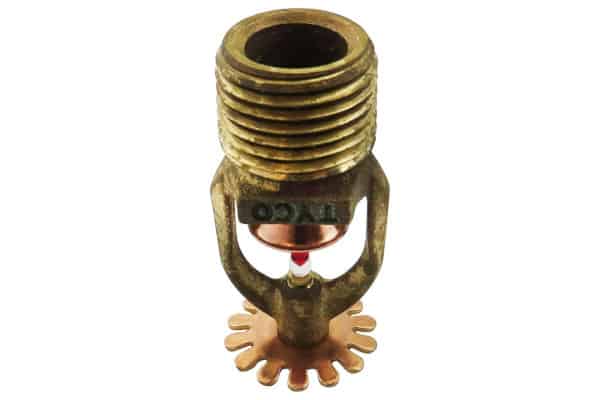
Tip 4: Check the deflector for the response type, temperature, and K-factor
Always match the sprinkler’s response type to the one you’re replacing. Swap out quick-response fire sprinklers with quick-response fire sprinklers and standard-response fire sprinklers with standard-response fire sprinklers—unless fire code and fire protection professionals say to use a different response type instead. The difference is critical: quick-response sprinklers activate more quickly and specialize in enabling a building’s occupants to safely escape. Standard-response sprinklers activate later and attempt to keep a fire in its place of origin.
For more on the difference between quick- and standard-response fire sprinkler heads, click here.
There are two ways to tell a sprinkler’s response type. You can typically find the letters SR (for standard response) or QR (for quick response) stamped on the deflector—the round piece of metal located at the tip of the sprinkler head.
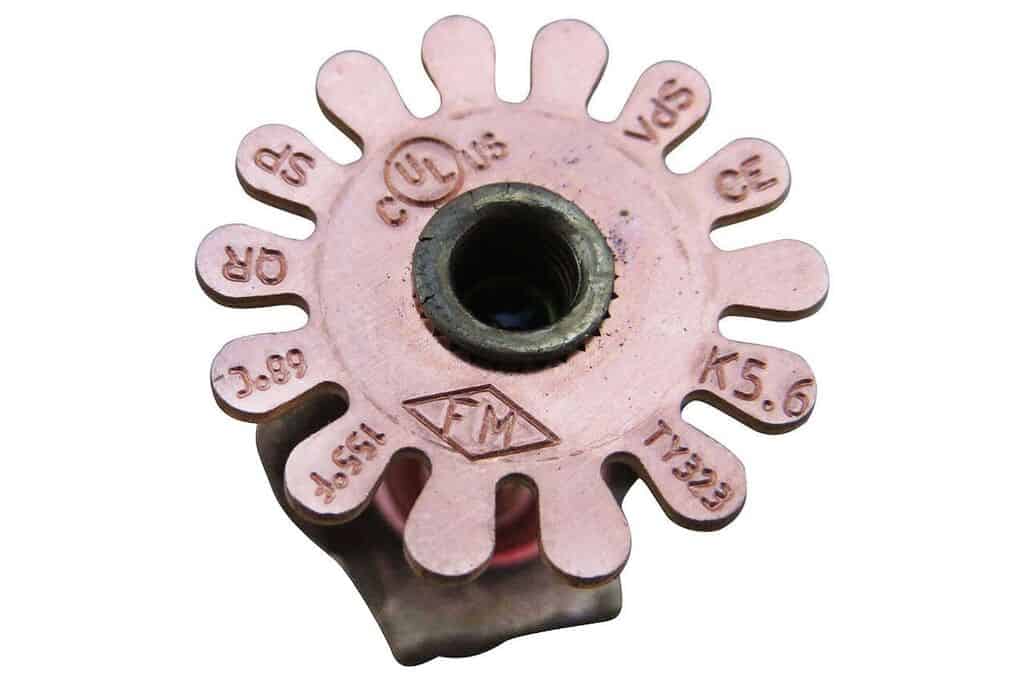
An alternative is to look at the width or diameter of the bulb. A 5 mm bulb indicates standard response, while the significantly slimmer 3 mm bulb indicates that it’s a quick response sprinkler. However, not all sprinklers have a bulb. Instead, some have temperature-sensitive metal components that allow the sprinkler to spray when surrounding temperatures rise.
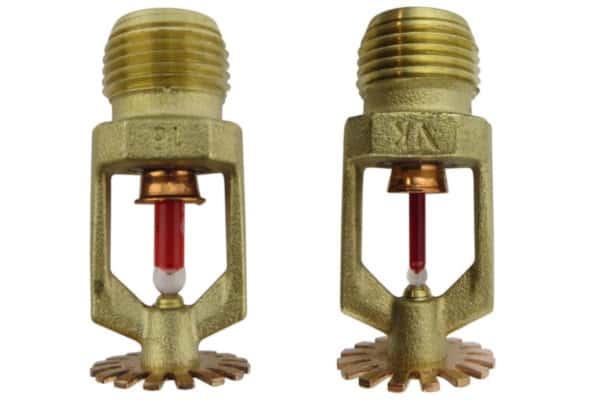
It’s also essential to match other characteristics when replacing sprinklers. including:
- The K-factor is essentially the size of the orifice where water comes out
- The temperature rating specifies at what temperature the sprinkler will activate
Often, these items are stamped on the deflector, as seen in the image a couple of paragraphs above. You can also tell the temperature by the color of the liquid in a fire sprinkler’s glass bulb if it has one:
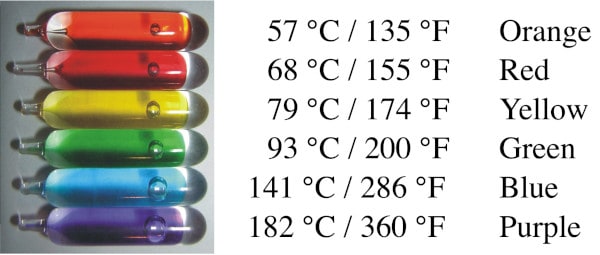
Tip 5: Keep spare sprinkler heads for fast fire sprinkler replacement
Spare fire sprinkler heads should be stored in an impact-resistant sprinkler head cabinet. This cabinet must remain accessible at all times in a facility with a fire sprinkler system installed. The number of spares needed—according to the rules in NFPA 13: Standard for the Installation of Sprinkler Systems—depends on how many sprinklers are installed in the system:
- Under 300 sprinklers installed: at least 6 spare sprinklers
- 300-1,000: at least 12 spares
- Over 1,000: at least 24 spares
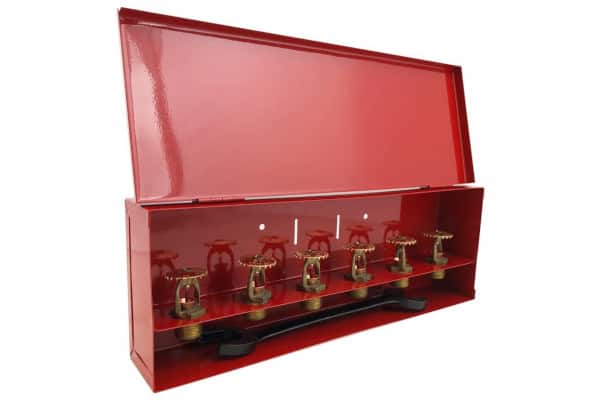
Cabinets also require matching sprinkler wrenches and a list of the property’s existing sprinklers. For more on these requirements, check out our article on fire sprinkler head cabinets.
Tip 6: Conduct professional and do-it-yourself inspections as required
If you take nothing else from this article, remember: fire sprinklers should be inspected regularly and any defective, damaged painted, corroded, or otherwise impaired fire sprinkler heads should be replaced with the right model ASAP. Failure to conduct inspections can result in code violations and place people and property at risk.
The following resources can help you learn more about what fire sprinkler system inspections entail:
- QRFS #104 – Residential Fire Sprinkler Systems: Maintaining Home Fire Sprinklers is Simple
- QRFS #111 – What Facility Managers Need to Inspect on a Fire Sprinkler System
If you’re ordering replacement fire sprinklers for your residential or commercial building, take a look at what QRFS has to offer. We carry commercial and residential fire sprinklers in a wide variety of sizes, response types, and finishes to suit your building’s needs. We also stock the fire sprinkler cover plates and escutcheons you may need to complete specific sprinkler assemblies.
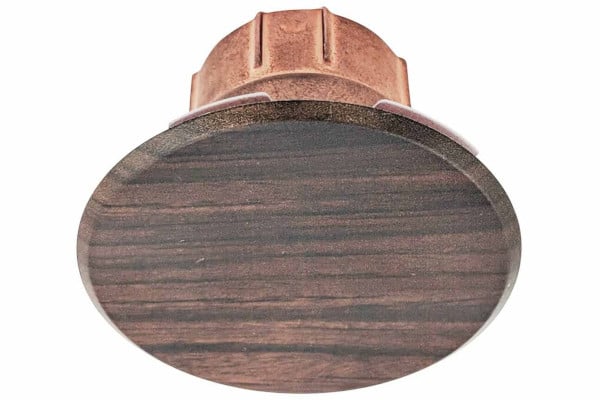
Still confused? Need help choosing a replacement head? You can search our knowledge base using the search bar above, call us at (888) 361-6662, or email support@qrfs.com.
This blog was originally posted at blog.qrfs.com. If these fire sprinkler tips proved helpful, check us out at Facebook.com/QuickResponseFireSupply or on Twitter @QuickResponseFS.


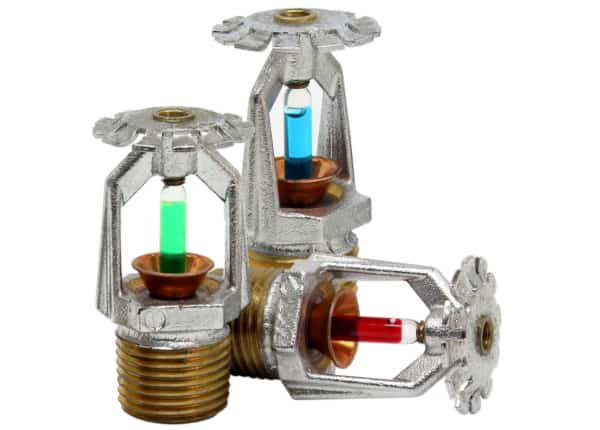
I liked your reminder of matching a sprinkler’s response type to the ones you’re replacing. My wife and I are wanting to upgrade our house and we were wondering how we could replace our sprinklers. I’ll be sure to tell her that we should match the sprinkler’s response type to the ones we replace.